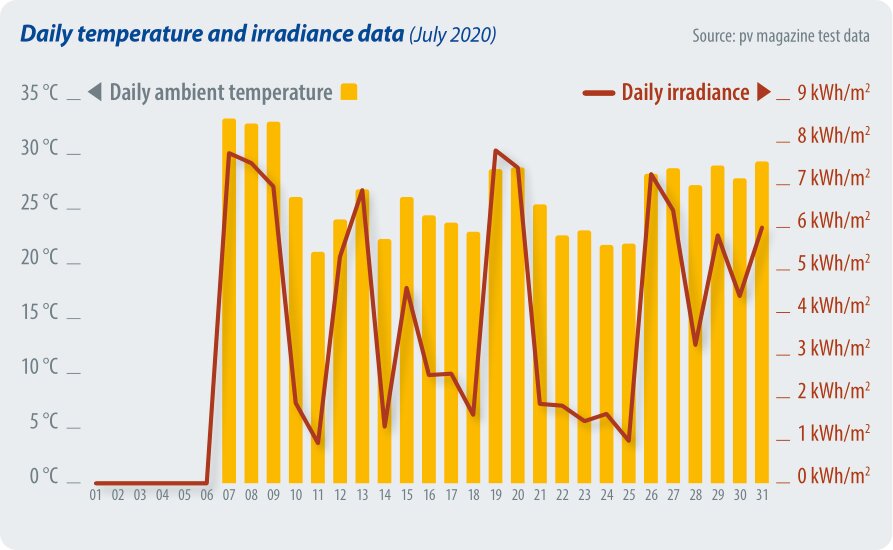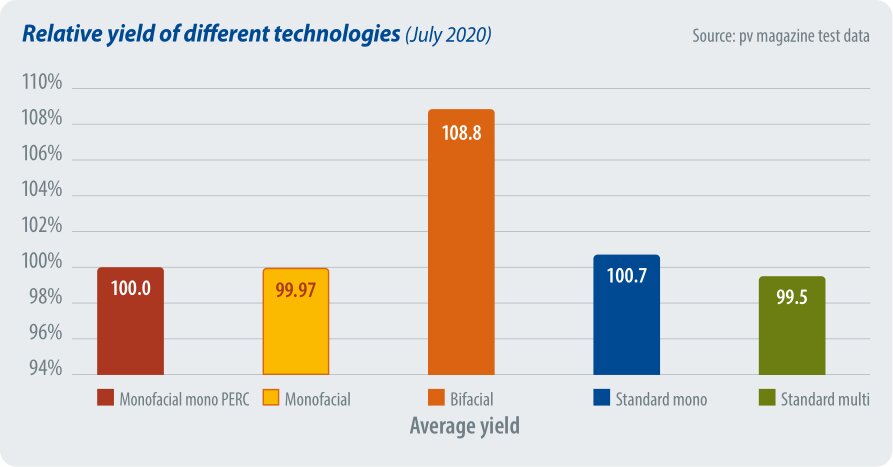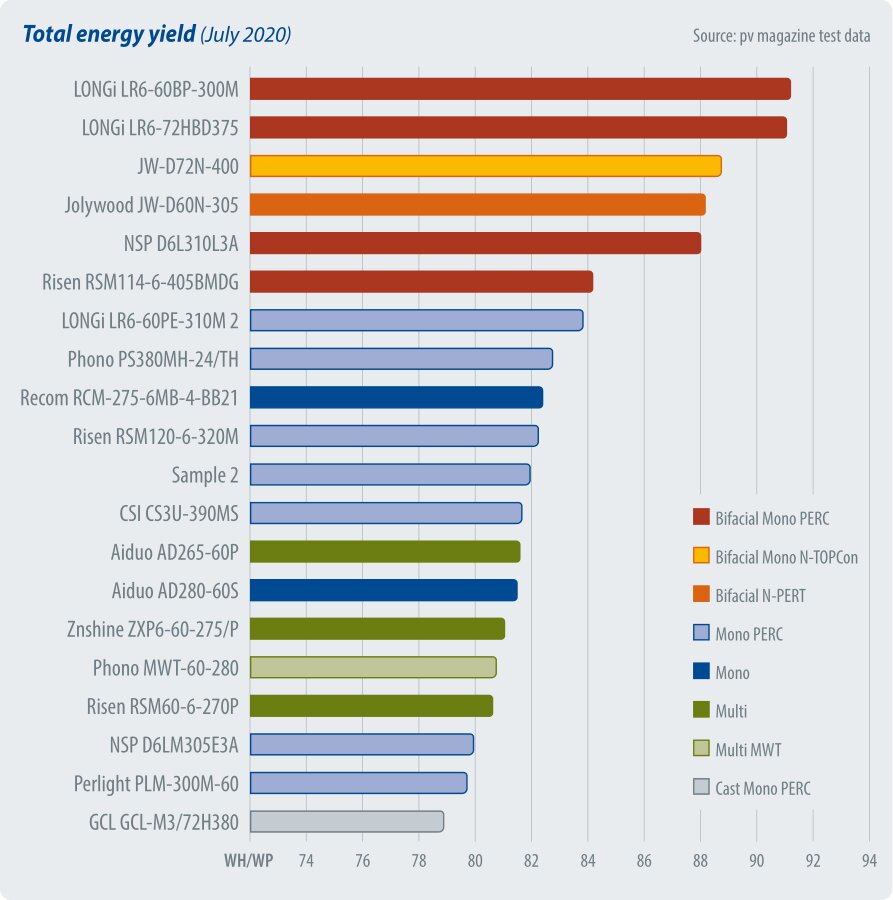The first chart to the right offers the meteo station data (irradiance and ambient temperature) for July 2020. Meteo data is missing from July 1 to July 6 due to power cuts.
A new mono PERC half-cut module from CSI (CS3U-390MS) was introduced to the outdoor test last month.
After operating for a full month, its energy yield performance is provided in the following tables and charts.
The average bifacial boost is 8.8% for July 2020. Bifacial boost is defined as the extra energy yield of the bifacial products compared to the average energy yield of all mono-facial mono PERC products.
The chart to the bottom right shows the comparison between different PV module technologies for July 2020. Bifacial modules are steadily performing above all the other technologies, with multicrystalline silicon PV having the lowest yield.



Notes on the energy yield measurements:
- The energy yield is given in Wh/Wp and calculated by dividing the energy produced by the module by the Pmax at STC of the module. This Pmax is the maximum STC power after a process of stabilization.
- The results are grouped in categories, per module type.
- The bifacial boost depends on many parameters: the bifaciality factor, the installation geometry, the albedo of the ground, and also the sun angle and diffuse irradiance. The ground in this case is gray gravel.
This content is protected by copyright and may not be reused. If you want to cooperate with us and would like to reuse some of our content, please contact: editors@pv-magazine.com.
